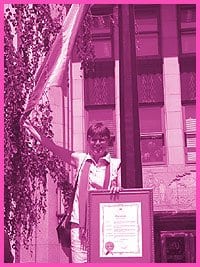It was a little intellectually incestuous. Months ago, at a party, I was having a conversation with about seven other queers on a leatherdyke’s porch. One woman, a writer herself, began to relate a story of a recent queer excursion that had been, shall we say, less than a joy for all involved.
But I’d already heard the story because she’d made the mistake of including another writer in the original trip and, as we all know, writers will craft a story from any fodder.
My friend laughed to hear that the ill-fated trip had already been crafted into a sordid tale, and I repeated something I’ve been saying for years. “Never piss off an artist, man. It’s dangerous.”
I trotted out examples, like my dumped and bitter friend, a queer musician who composed such classic lyrics as “Why are you always fuckin’ with me?” in a song with such an angst-inspired hook that I hummed it for months after hearing it twice.
And the time I read a scathing poem by Chrystos and recognized the hapless subject.
And the fact that my live-in lover has made me formally swear to refrain from writing even a single haiku in reference to her, should our relationship ever go sour.
With rueful expressions all around; everyone on the porch nodded silently, perhaps thinking back to their own moments of artistic overexposure.
“Writers and artists should only date each other,” someone ventured. “That way, if they split up, they’re gonna be equally at risk of being forcibly art-ed.”
There was a pause while everyone considered that.
“No way,” I said. “So many of us are artists, musicians, and writers, who would the few that are left date?”
The only guy on the porch who didn’t identify as an artist looked uncomfortable. But I’ve seen his collages. I know better.
What started as a joke made me think, not only of the people on the porch, but of the other folks at the party. A quick inventory came up with writers, printmakers, photographers, filmmakers, poets and musicians-an eclectic and talented set of queers from inside a tiny community, creating powerful art that speaks to the outside world.
One of the first tenets of authorship is: write what you know. That extends to all art.
Queers and BDSM players make our art from our lives, our experiences, our bodies, our lovers’ bodies, and our activities together. We press our loves and our hates and our passionate beliefs into vinyl, print them onto paper, expose them as images, and share them around.
So dating an artist isn’t just about love or sex or relationships. It’s really about doing public service in the name of queer art.
* Elaine Miller is always looking for inspiration.

 Why you can trust Xtra
Why you can trust Xtra


